Link building is a digital marketing strategy for improving both the user experience and your website’s SEO. A well-executed link-building strategy can help your law firm improve search engine rankings, increase organic traffic, enhance online reputation and credibility, boost brand exposure, establish relationships and partnerships, enhance domain authority, generate referral traffic and leads, and outperform competitors. More importantly, it can help you to get more clients.
If you are a lawyer who wants to use link-building to grow your legal practice, this article will help you get started.
What is link building?
Link building is the practice of creating or publishing content in order to add hyperlinks to your website. Hyperlinks, or just “links,” are digital references to other web pages that a visitor can follow by clicking or tapping.
Link building is essential for any website because links enable visitors to navigate within your website. Think of each link as a door from one webpage to another. Some links are within a website, like a door from one room within a house to another. Other links go to external websites, like a front or side door from the exterior environment into a home. Readers can use links to look up information about a specific person in your firm, locate your firm’s contact information quickly if they have a question, or find a specific source about an area of law in which you practice.
Even more importantly for marketing purposes, link building impacts SEO. Search engines like Google look for links when ranking websites to appear in search results. You don’t want to add links where they don’t fit, but having a few links where it makes sense for the user experience will boost your website so it appears higher up on search engine results pages.
The Link-Building Process
To ensure consistency, cohesion, scalability, and long-term success, it’s wise to plan your link-building strategy. It’s also important to make sure you have valuable, high-quality content on your website.
Here’s an overview of what’s involved:
- Research and analyze competitors’ backlink profiles.
- Use various strategies for building links.
- Monitor and disavow low-quality or spammy backlinks.
- Stay informed about SEO trends and best practices.
Researching Links
You can research a website’s links by using free tools like Majestic.com. You can use Majestic.com to examine what kind of websites link to that page. Here is a step-by-step guide on how to do that.
Step 1: URL Search – Type in the address of the website you want to examine in the search bar and click on the orange magnifying glass. You will be taken to a results page. Some of the graphs and charts are disabled until you subscribe to the service.
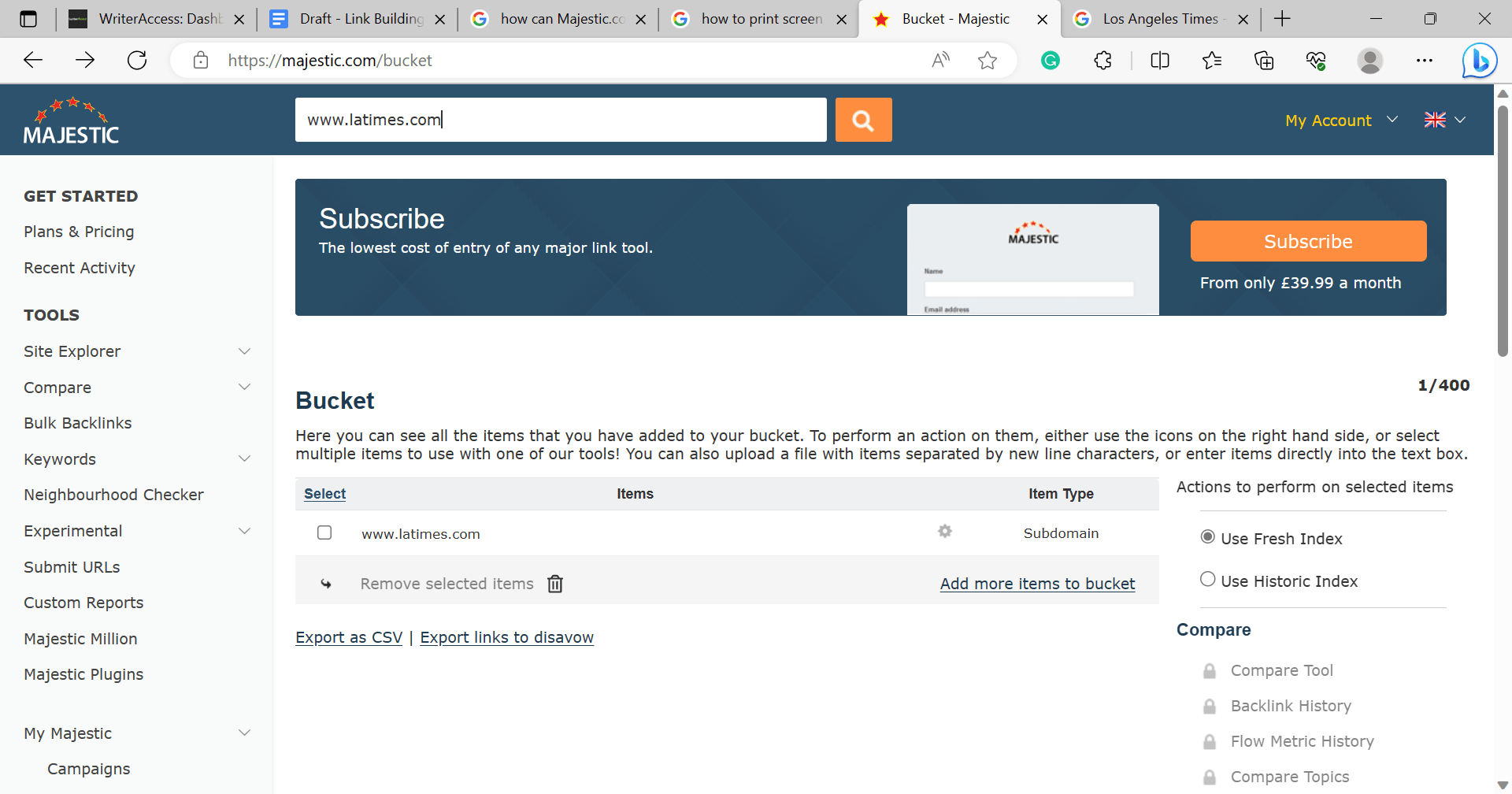
Step 2: Inbound Links – The available charts will display information that may prove useful. External inbound links show incoming links from outside websites, which are links that other websites direct to yours.
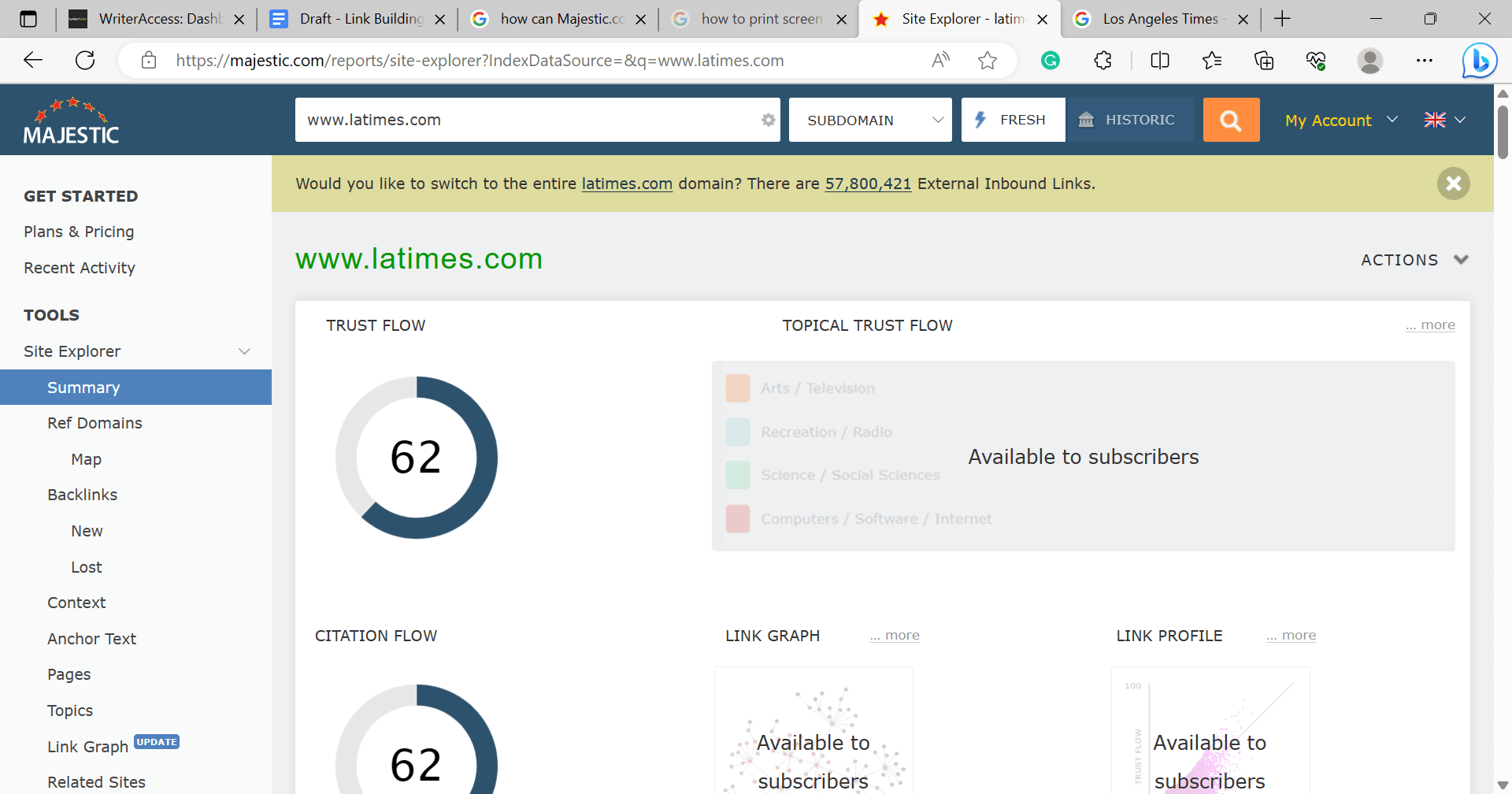
Step 3: Live vs. Duplicate Links – Majestic shows which links are live and which have been deleted. Majestic also displays which links are duplicates and the number of distinct links that exist.
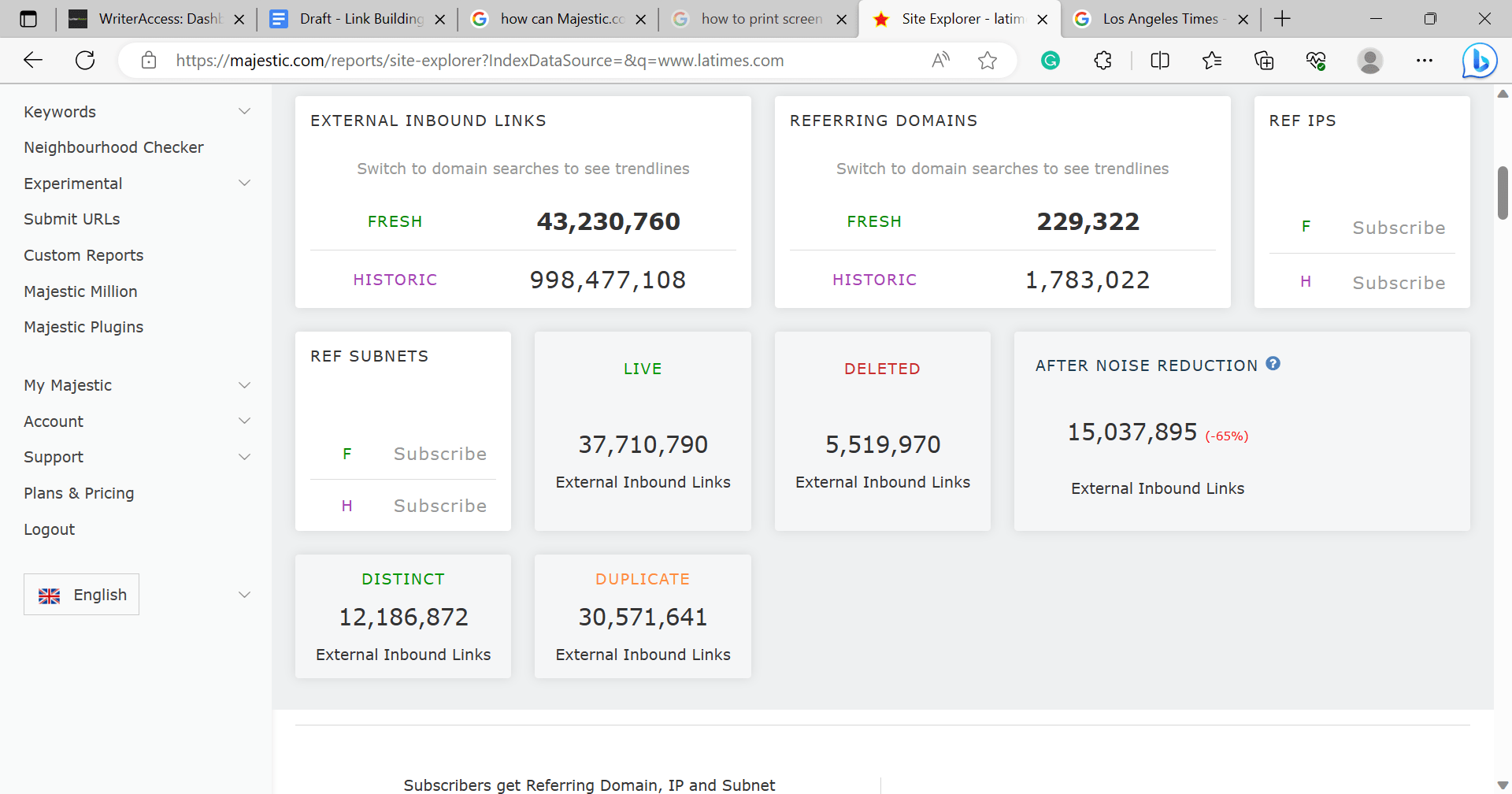
Step 4: Quality of Links – Evaluate the quality of links to determine which ones you should use to improve your website’s search results. Links are tools that enable users to quickly find authorities to support your content. The best websites will use links from a variety of authorities rather than rely on a single source.
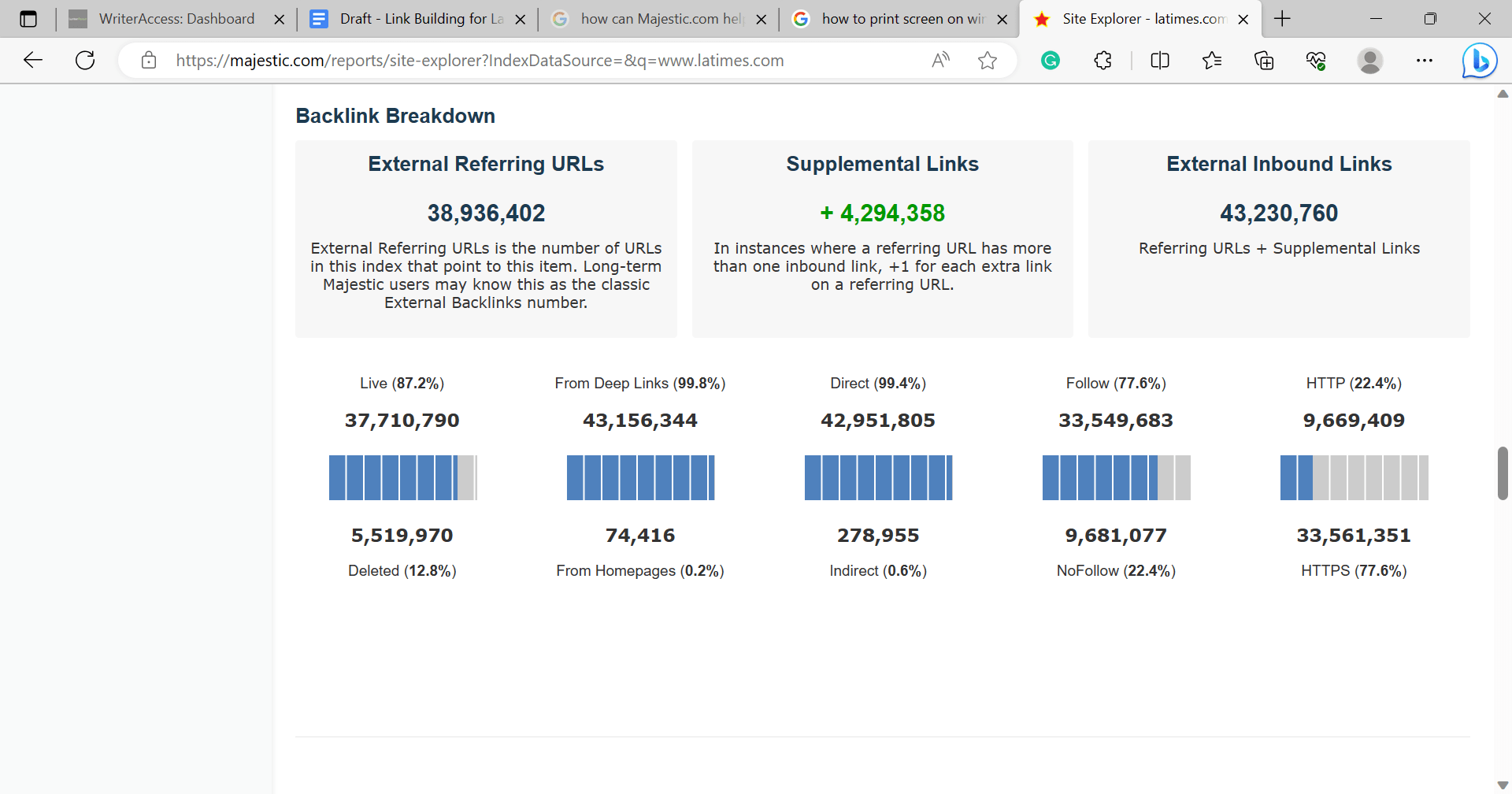
Step 5: Link Maintenance – One of the most significant factors to link building is to ensure that all links are properly working. Ensure there are no typos with the links being used and that the website being linked to still exists. Links are not useful if the link doesn’t work and could negatively affect your website’s rankings on Google, Bing, and other search engines.
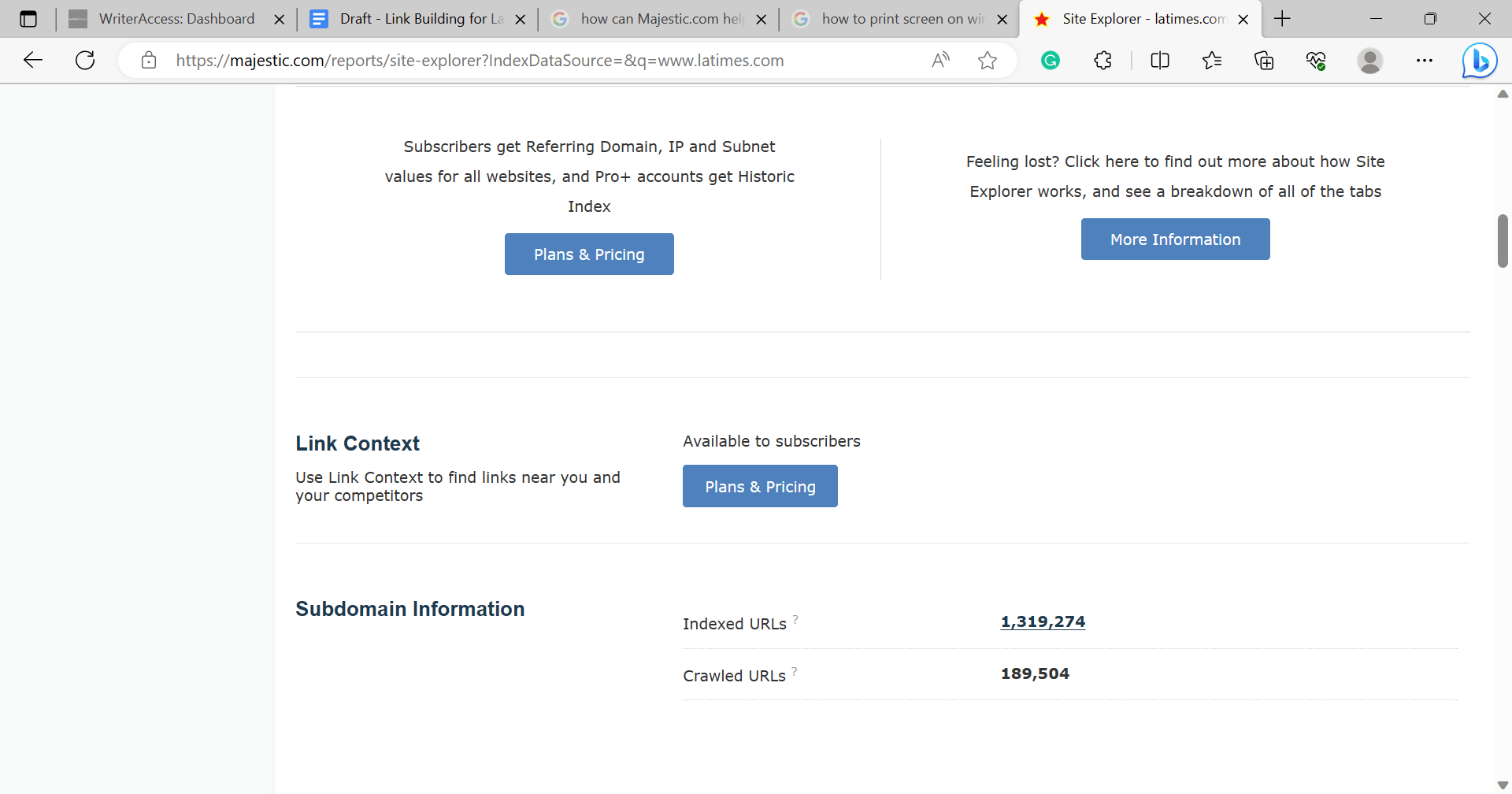
Options for Building Links
There are generally two kinds of backlink generation that a website can use to compel the owners and operators of other quality websites to link to content on your website. Those two backlink-generation tools are “link magnets” and “anchor text links.” When well-regarded websites link to yours using one of those two options, it greatly enhances your web page and website SEO rankings.
Generating backlinks from other sites establishes an authoritative backlink profile for your legal site. Backlinks to quality websites help to affirm your law firm’s experience, expertise, authority, and trustworthiness, which Google refers to as E-E-A-T or simply EEAT.
The better your website’s EEAT, the higher its rankings on relevant search terms on Google, Bing, and other search tools. Let’s take a closer look at the two types of backlink generators and how you might use them.
Link Magnet Content – These links are generated by content published on your law firm’s webpage that compels other websites or social media users to link to it. Such content is known as a “link magnet.”
There are five general types of link magnets that law firms and other online businesses or entities can use as link magnets:
1. Blog Posts – Producing unique, original, and compelling legal blog posts that educate readers and possibly provide them with an entertaining narrative can draw more visitors when other websites link to your blog posts. The post might include video content or maybe an audio file that also can be shared via links while enhancing the user experience. Blog posts also can be made using several formats that help to better organize and present the information. For example, listicles are a type of blog post that combines a list and an article and has proven to be very popular and beneficial for SEO rankings.
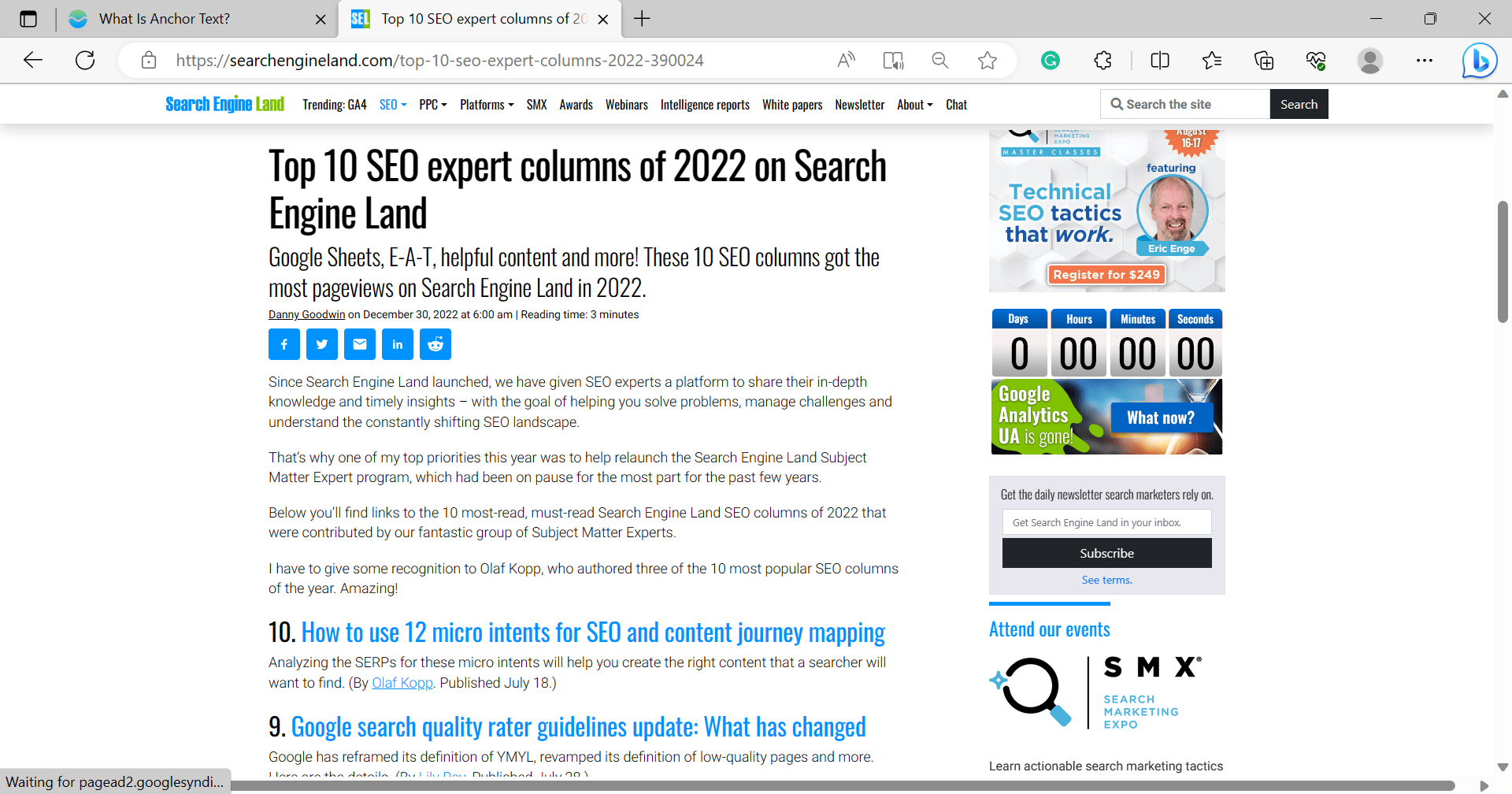
2. Infographics – Creating an infographic to better illustrate a point or concept can help to make it more understandable to viewers while encouraging other websites to link to the infographic when they publish related content. Your law firm might use infographics to show the relationship between liability and negligence in a car accident or another legal matter.
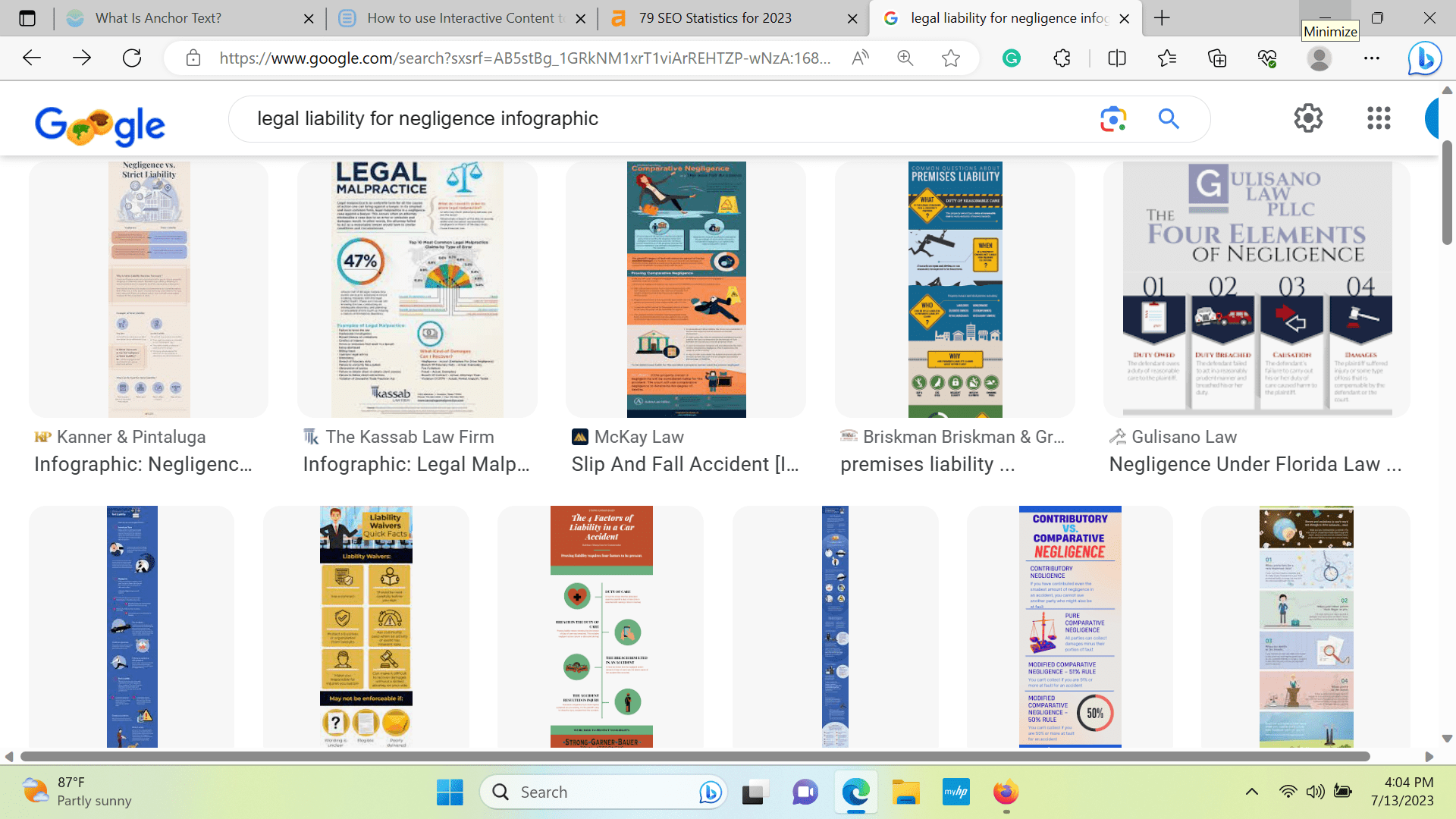
3. Income Reports and Statistics – Tracking and publishing income reports or statistical reports can generate greater interest in your website. The income reports do not have to be proprietary income reports regarding your place of business, but they could be. You also could compile income reports that publicly traded corporations publish or maybe income reports for entire industries that the federal government or special groups provide. You also can publish statistics that help to show changes in income over time and maybe point to general causes.
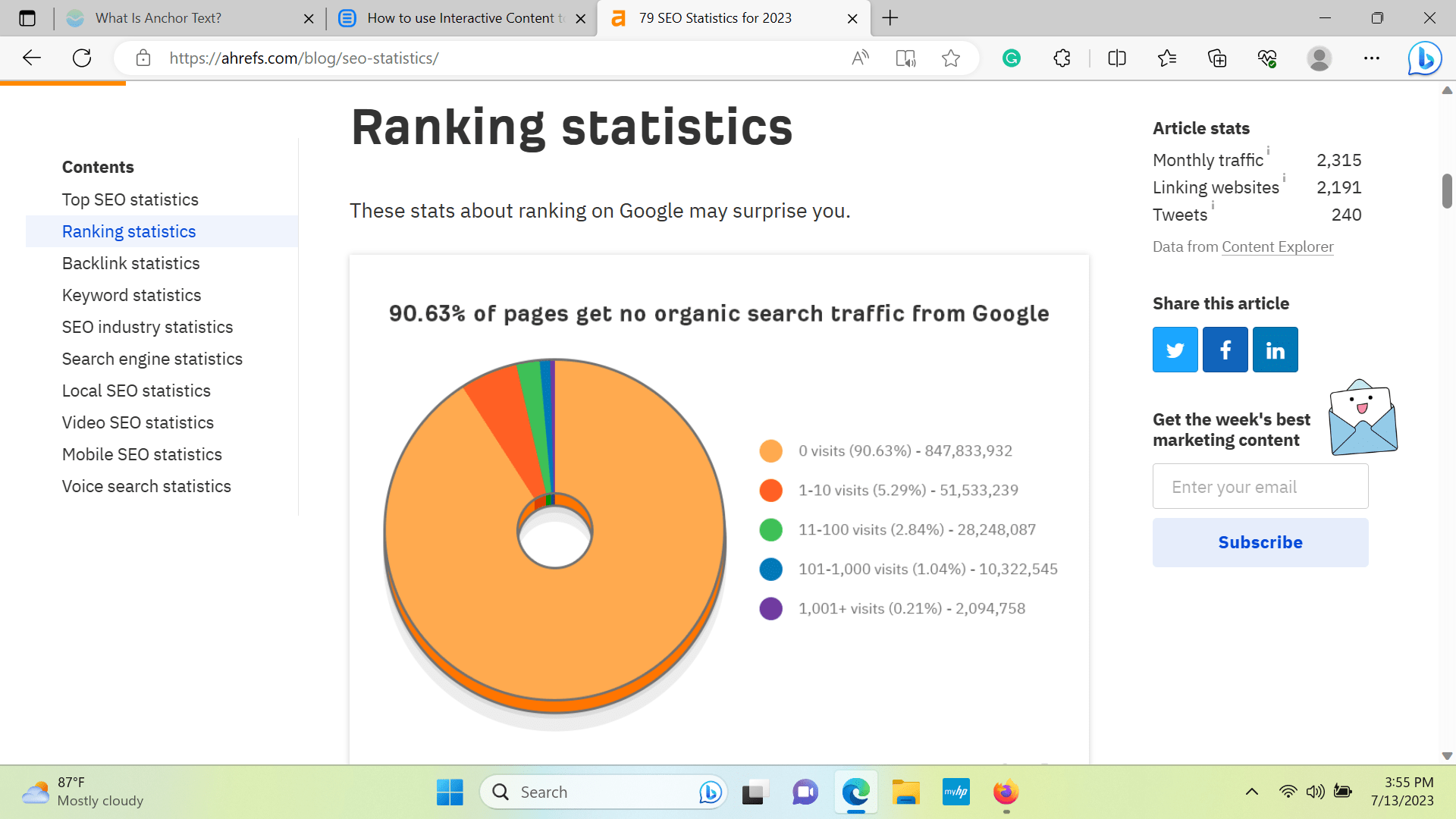
4. Case Studies – Case studies can help to demonstrate how something worked very well or maybe worked horribly and its impact on a particular issue or maybe a business or an organization. Case studies are unique examinations that help to provide readers with more information on a particular matter or issue that might be similar to one that is relevant to their organization.
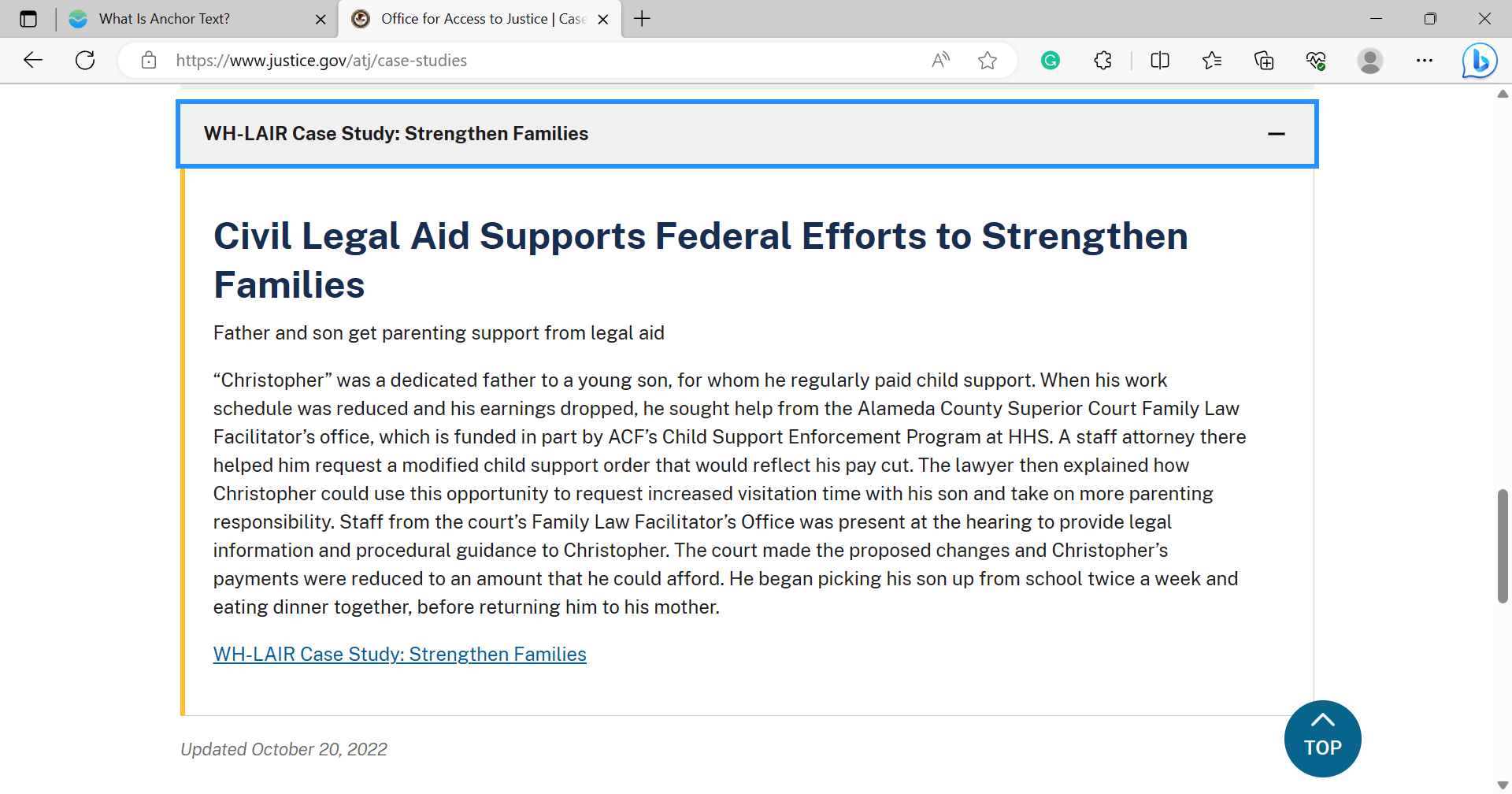
5. Quizzes – You can create fun and informational quizzes that might compel other websites to link to them on their own respective websites. The quizzes might be serious in nature or maybe entertaining. The idea is to capture a visitor’s interest and keep them on the page longer while interacting with the quiz.
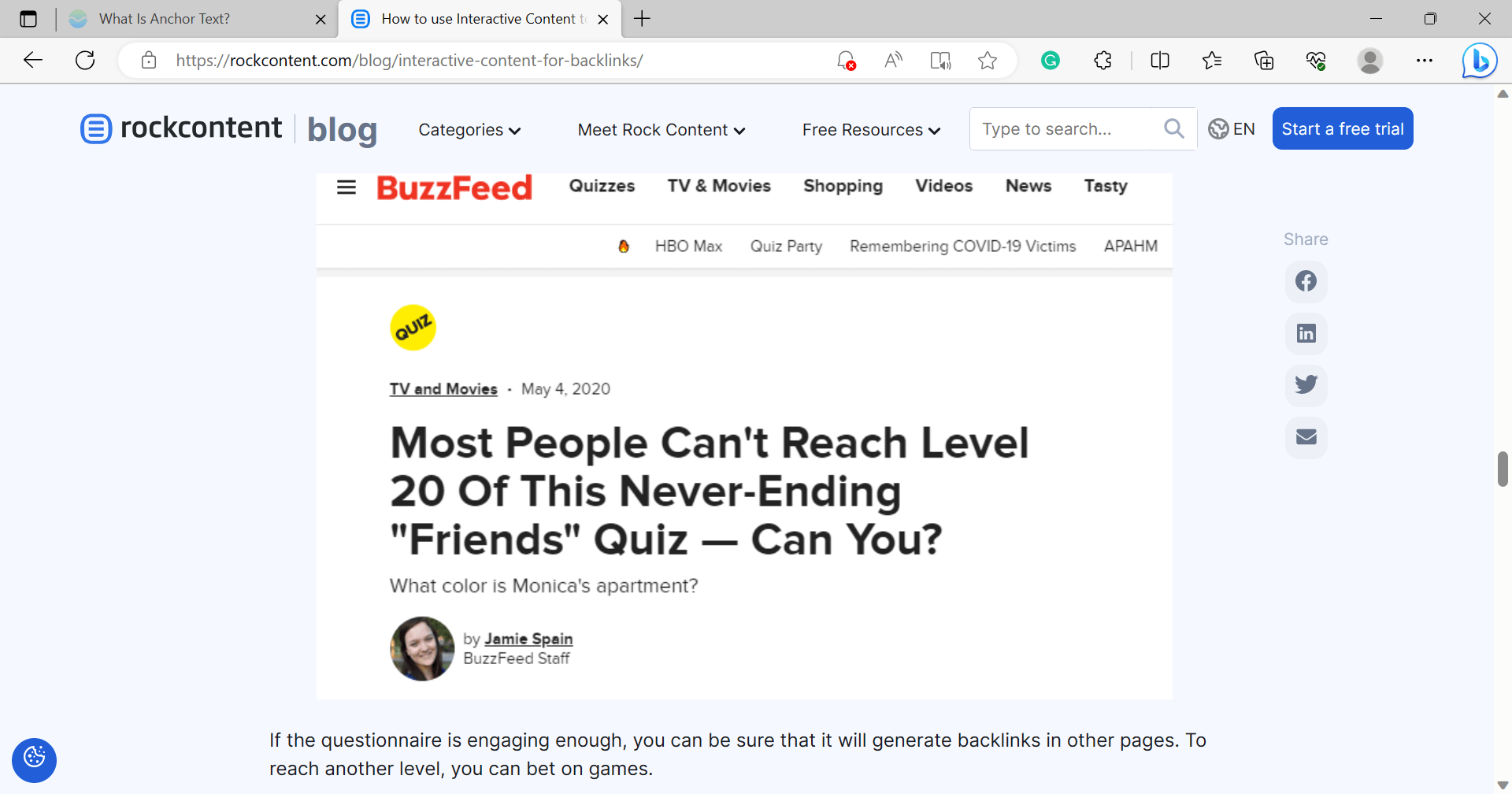
Such enhancements to the user experience help search engines to rate a respective web page much better for relevant search terms that visitors might use.
Anchor Text Links – Anchor text links refer to the labels or titles of specific words that contain links to other websites. The clickable words enable Google and other search engines to rate the particular web page that is linked with the anchor text. An anchor text link that directs someone to another website is called an “external link.” When a link on another website directs the visitor to your website, that is a “backlink anchor text.”
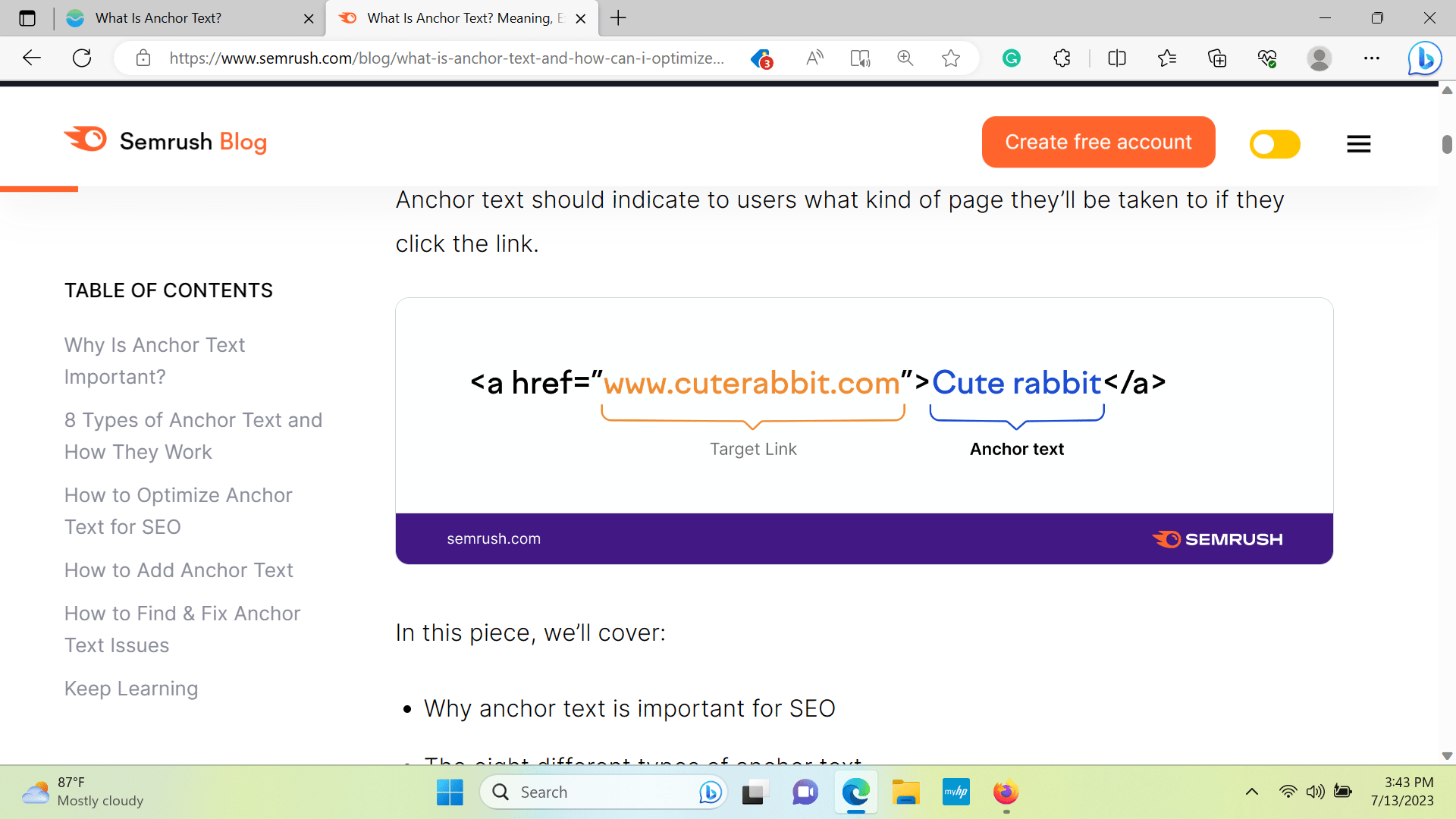
Google uses external anchor text links to help understand what your page is about and for which keywords it should rank. For instance, if you add an anchor text link to statistics regarding child support that leads to a government webpage about child support statistics, Google will recognize child support as a topic and keyword that your website is about.
Best Practices for Link Building
There are several ways you can expand your link building. Like most SEO though, you will need to be patient. Early internet users often increased SEO by adding links to every sentence on their websites or relentless comments on other websites. Search engines can tell when a website is gaming the system by adding artificial links.
Instead, you should add links sparingly and include them naturally within the context of the content. For instance, if you are writing about divorce, it may be appropriate to add links for each issue that comes up in a divorce. You could add a separate link for property division, alimony, child custody, child support, etc, but you should not add a hyperlink every time you use the word “divorce.” Similarly, if you’re writing about free speech, it would be appropriate to add a link where you cite a Supreme Court case or relevant federal or state documents, such as the First Amendment of the U.S. Constitution.
Here is a short primer on how not to use links in the content that you publish:
- Do not add a link to the first word of every sentence.
- Do not use more than five words in a single link title or link label.
- Do not add links to irrelevant content.
- Do not overly contribute link-containing content to low-quality websites.
- Do not use the term “click here” as a link title or label.
- Do not use dead links.
It is generally best to add useful, high-quality content that you create on your own website. The more content you have, the more links you will naturally generate over time. Avoid the temptation of guest posting on third-party websites unless those websites are of high quality. For example, you might contribute content for your respective state Bar Association’s website.
Link building should be a natural and gradual process to help a user rather than a “check the box” approach to SEO. You should avoid guest posting and other “easy” ways to add links to your websites because search engines can tell when link building is artificial. Instead, be patient and do the hard work of expanding your website.
Examples
Here is a good example and a bad example of link building:
Good example: Attorneys should use LegalMatch to connect with more clients.
Bad example: Attorneys should use LegalMatch to connect with more clients.
The first example uses a hyperlink on a single keyword, which draws attention to that keyword and sends the user to the company’s homepage to learn more. The link looks natural and makes sense in the context of the sentence. The link also works so the user isn’t frustrated when he or she clicks on it.
The second example is overstuffed with links in a way that isn’t natural. The links in the second example often go to pages that have nothing to do with the word it’s tied to, such that they are distracting rather than enhancing the sentence. The last link is also broken and useless to the reader. Think of links as bold, underlined, or italicized words and phrases. You should use these tools sparingly and consistently to get your point across rather than making every other word bold.
Closing Thoughts
Link building is essential for both a great user experience on your website and to help boost your SEO efforts. Link building should be consistent but not overwhelming. Links are a great way to connect all the pages of your website but should be used wisely to maximize their impact.

